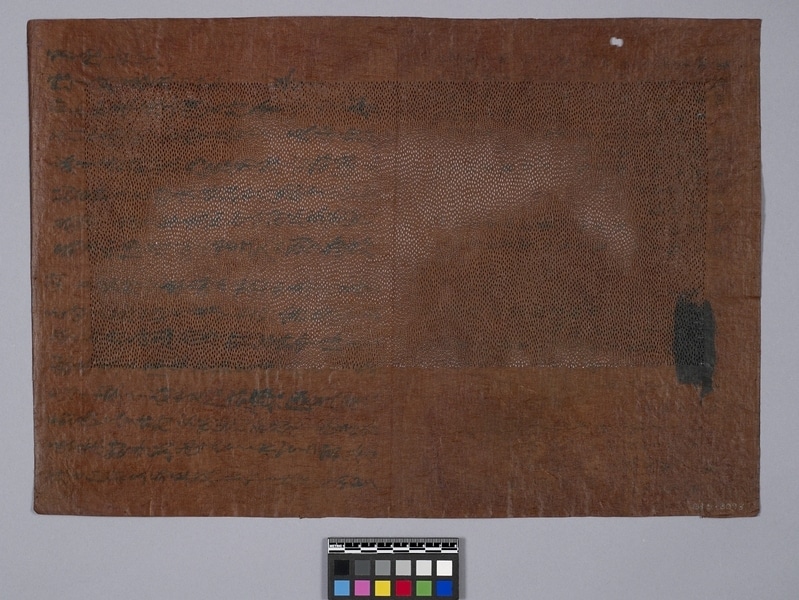Stencil Item Number: Ed5.3093 from the MOA: University of British Columbia

Description
The rectangular stencil has an overall komono cut design of ellipses. Two register points are located on the bottom edge of the design. Two joined circles are punched out in the upper corner of the border of the stencil. Traces of Japanese script on the back.
History Of Use
The katazome method of dying fabric used a resist paste applied through a stencil; when the paste dried the stencil was removed and colour was applied by brush. The paste was then washed away leaving undyed areas to form pattern against coloured ground. Prior to the 16th century cut stencils were used to colour leather armour. However, during the Edo Period (1603-1868) the technique was developed as a true native craft. Komon is a small overall design used for restrained monochrome patterns on apparel of samurai and townsfolk.
Cultural Context
fabric printing
Item History
- Made in Mie, Japan before 1955
- Collected before 1955
- Owned by Special Collections U.B.C. Library before July 5, 1985
- Received from Special Collections U.B.C. Library (Transferring institution) on July 5, 1985
What
- Name
- Stencil
- Identification Number
- Ed5.3093
- Type of Item
- stencil
- Overall
- height 31.1 cm, width 45.4 cm
Who
- Culture
- Japanese
- Previous Owner
- Special Collections U.B.C. Library
- Received from
- Special Collections U.B.C. Library (Transferring institution)
Where
- Holding Institution
- MOA: University of British Columbia
- Made in
- Mie, Japan
When
- Creation Date
- before 1955
- Collection Date
- before 1955
- Ownership Date
- before July 5, 1985
- Acquisition Date
- on July 5, 1985
Other
- Item Classes
- textiles
- Condition
- good
- Accession Number
- 1037/0132